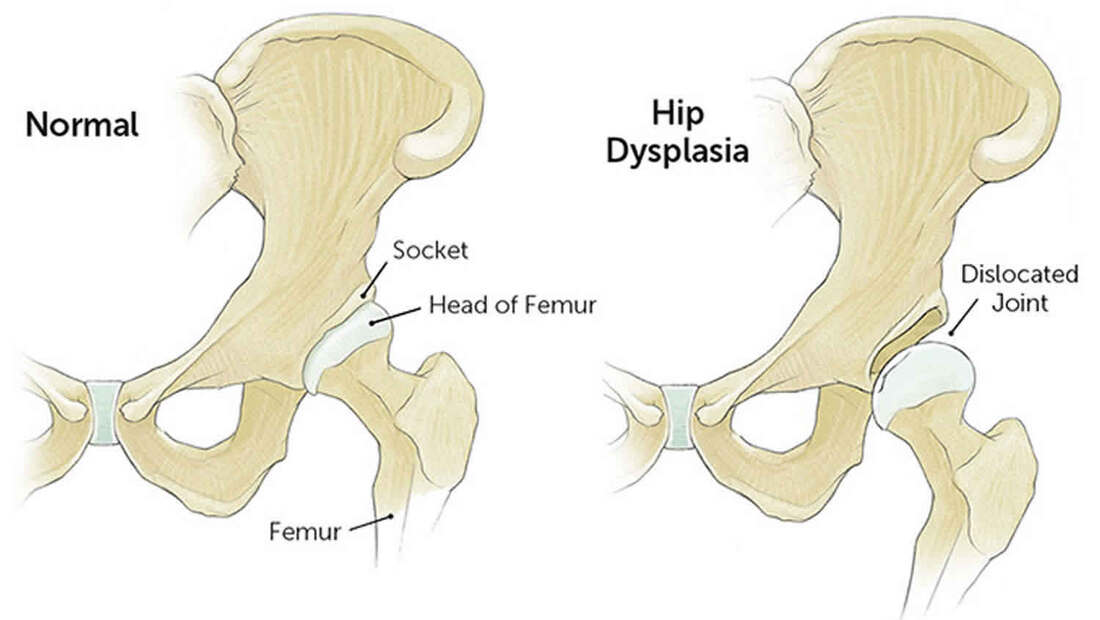Pediatric hip dysplasia is a complex condition that can affect infants, children, and adolescents, with significant implications for long-term musculoskeletal health. In this blog post, Dr. Brianna aims to shed light on this condition, discussing its causes, diagnosis, treatment options, and the latest research advancements.What is Pediatric Hip Dysplasia? Pediatric hip dysplasia, also known as developmental dysplasia of the hip (DDH), refers to an abnormal development of the hip joint. It can range from mild instability to complete dislocation of the hip joint. DDH can occur during fetal development, infancy, childhood, or adolescence, and its severity varies among individuals. What causes hip dysplasia? The exact cause of pediatric hip dysplasia is not always clear, but several factors can contribute to its development. These include genetics, breech position during pregnancy, swaddling or tight wrapping of infants' hips, and certain environmental factors. Female infants are more prone to DDH than males, and it often runs in families. How is hip dysplasia diagnosed? Early detection of hip dysplasia is crucial for effective management and preventing long-term complications. Newborns are routinely screened for hip dysplasia using physical examination techniques like the Ortolani and Barlow tests. Imaging studies such as ultrasound or X-rays may be used for confirmation if the physical exam is inconclusive. In older children and adolescents, clinical symptoms like limping, leg length discrepancy, or hip pain may prompt further evaluation with imaging studies. What is the proper treatment for hip dysplasia? Treatment strategies for pediatric hip dysplasia depend on the age of the child and the severity of the condition. In infants, gentle manipulation and positioning techniques like Pavlik harness or Frejka pillow may be used to maintain proper hip alignment and promote normal joint development. For older children and adolescents, treatment may involve bracing, stretching, therapeutic exercise, or surgical interventions. Have there been any advances in research regarding hip dysplasia? Recent research in the field of pediatric orthopedics has focused on improving diagnostic techniques, refining treatment algorithms, and understanding the long-term outcomes of hip dysplasia management. Advances in imaging technology, such as three-dimensional ultrasound and magnetic resonance imaging (MRI), offer better visualization of hip anatomy and aid in early diagnosis. Moreover, studies exploring the genetic basis of DDH provide insights into its underlying mechanisms and potential targets for future therapies. Longitudinal cohort studies tracking patients from infancy to adulthood help evaluate the effectiveness of different treatment modalities and identify factors influencing outcomes, such as age at diagnosis, severity of dysplasia, and compliance with treatment protocols. Conclusion: Pediatric hip dysplasia is a multifaceted condition that requires early detection and tailored management approaches to optimize outcomes. Through ongoing research efforts and multidisciplinary collaboration, healthcare professionals aim to enhance our understanding of DDH, refine treatment strategies, and improve the quality of life for affected individuals from infancy through adolescence and beyond.
Comments are closed.
|
WelcomeWelcome to the Leaps and Bounds Blog page where you can find helpful parent information, tips and other topics of interest. Check back monthly for new entries and be sure to send us a message if there are any topics you'd like to learn more about! Archives
July 2024
Categories |
|
Insurance Based Pediatric Outpatient Rehabilitation
|
LOCATIONSSOUTH SHORE COMMONS
2955 Veterans Road West Staten Island, NY 10309 (718) 477-1911 RICHMOND AVENUE 1550 Richmond Avenue Staten Island, NY 10314 (718) 313-4743 NEW JERSEY 670 N. Beers Street (Unit 1) Holmdel, NJ 07733 (732) 479-2474 |
About Us Physical Therapy Services Schroth Treatment Dynamic Movement Intervention Continuing Education Join Our Team! Blog Contact Us © COPYRIGHT 2015. ALL RIGHTS RESERVED.
|


